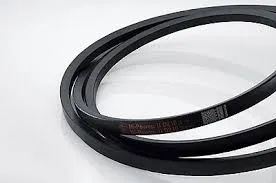- Arabic
- French
- Russian
- Spanish
- Portuguese
- Turkish
- Armenian
- English
- Albanian
- Amharic
- Azerbaijani
- Basque
- Belarusian
- Bengali
- Bosnian
- Bulgarian
- Catalan
- Cebuano
- Corsican
- Croatian
- Czech
- Danish
- Dutch
- Afrikaans
- Esperanto
- Estonian
- Finnish
- Frisian
- Galician
- Georgian
- German
- Greek
- Gujarati
- Haitian Creole
- hausa
- hawaiian
- Hebrew
- Hindi
- Miao
- Hungarian
- Icelandic
- igbo
- Indonesian
- irish
- Italian
- Japanese
- Javanese
- Kannada
- kazakh
- Khmer
- Rwandese
- Korean
- Kurdish
- Kyrgyz
- Lao
- Latin
- Latvian
- Lithuanian
- Luxembourgish
- Macedonian
- Malgashi
- Malay
- Malayalam
- Maltese
- Maori
- Marathi
- Mongolian
- Myanmar
- Nepali
- Norwegian
- Norwegian
- Occitan
- Pashto
- Persian
- Polish
- Punjabi
- Romanian
- Samoan
- Scottish Gaelic
- Serbian
- Sesotho
- Shona
- Sindhi
- Sinhala
- Slovak
- Slovenian
- Somali
- Sundanese
- Swahili
- Swedish
- Tagalog
- Tajik
- Tamil
- Tatar
- Telugu
- Thai
- Turkmen
- Ukrainian
- Urdu
- Uighur
- Uzbek
- Vietnamese
- Welsh
- Bantu
- Yiddish
- Yoruba
- Zulu
Sep . 24, 2024 02:35 Back to list
Understanding Engine Timing Belts and Their Importance in Vehicle Performance
Understanding Engine Timing Belts Essential for Optimal Performance
The engine timing belt is a crucial component in the operation of an internal combustion engine. It performs the vital task of synchronizing the rotation of the crankshaft and camshaft(s), ensuring that the engine's intake and exhaust valves open and close at the proper intervals during each cylinder's intake and combustion strokes. This precise timing is essential for optimal engine performance, fuel efficiency, and overall longevity.
How Timing Belts Work
At the heart of an engine's operation lies the four-stroke cycle intake, compression, power, and exhaust. For these stages to occur seamlessly, the timing belt plays a pivotal role. The belt, typically made of reinforced rubber, is equipped with teeth that mesh accurately with the gears of the crankshaft and camshaft. As the engine runs, the rotation of the crankshaft turns the belt, which, in turn, drives the camshaft, thus opening and closing the valves at the precisely timed moments.
Timing belts typically operate under high tension and exposure to varying temperatures. They need to be robust enough to manage these conditions while also maintaining a precise fit to avoid slippage, which can lead to catastrophic engine failure.
Maintenance and Replacement
engine timing belt

Like any component in a vehicle, timing belts have a limited lifespan, typically ranging from 60,000 to 100,000 miles, though this can vary based on the manufacturer’s specifications and driving conditions. It is crucial for vehicle owners to follow the maintenance schedules provided by their manufacturers to prevent unexpected engine damage.
A failing timing belt can lead to serious engine problems, such as a bent valve or even complete engine failure, as the cogs of the belt may detach or break entirely. Signs that a timing belt may be failing include a ticking noise from the engine, an overheating engine, or visible wear on the belt. Regular inspections and timely replacements are essential to avoid these costly issues.
Choosing the Right Timing Belt
When it comes to replacing a timing belt, vehicle owners should opt for high-quality parts that meet or exceed the original specifications. Using inferior parts can lead to premature wear and increased risk of failure. It’s also advisable to consider replacing other related components, such as tensioners and water pumps, at the same time. This proactive approach can save on labor costs and reduce the risk of future issues.
Conclusion
In summary, the engine timing belt is a small yet mighty component critical for the efficient functioning of an automobile. Its responsibilities of synchronizing the engine’s operations underscore the importance of regular maintenance and timely replacements. Car owners are encouraged to remain vigilant regarding the condition of their timing belts and to adhere to the manufacturer's guidelines. By doing so, they can ensure that their engines run smoothly and effectively, ultimately extending the life of their vehicles and enhancing their driving experience. Remember, a well-maintained timing belt is not just a part; it is the heartbeat of your engine!
-
Upgrade Power Steering Pump Belt for Smooth, Quiet Operation
NewsAug.27,2025
-
Precision Timing Belt & Chain: Engine Performance & Durability
NewsAug.26,2025
-
Precision Lathe Drive Belts: Durable & Reliable Performance
NewsAug.25,2025
-
84.5 Serpentine Belt: Durable & Precision Fit for Your Engine
NewsAug.24,2025
-
Premium Ribbed Drive Belts for Quiet Power Transmission
NewsAug.23,2025
-
High-Performance Vehicle Timing Belt for Engine Precision
NewsAug.22,2025

